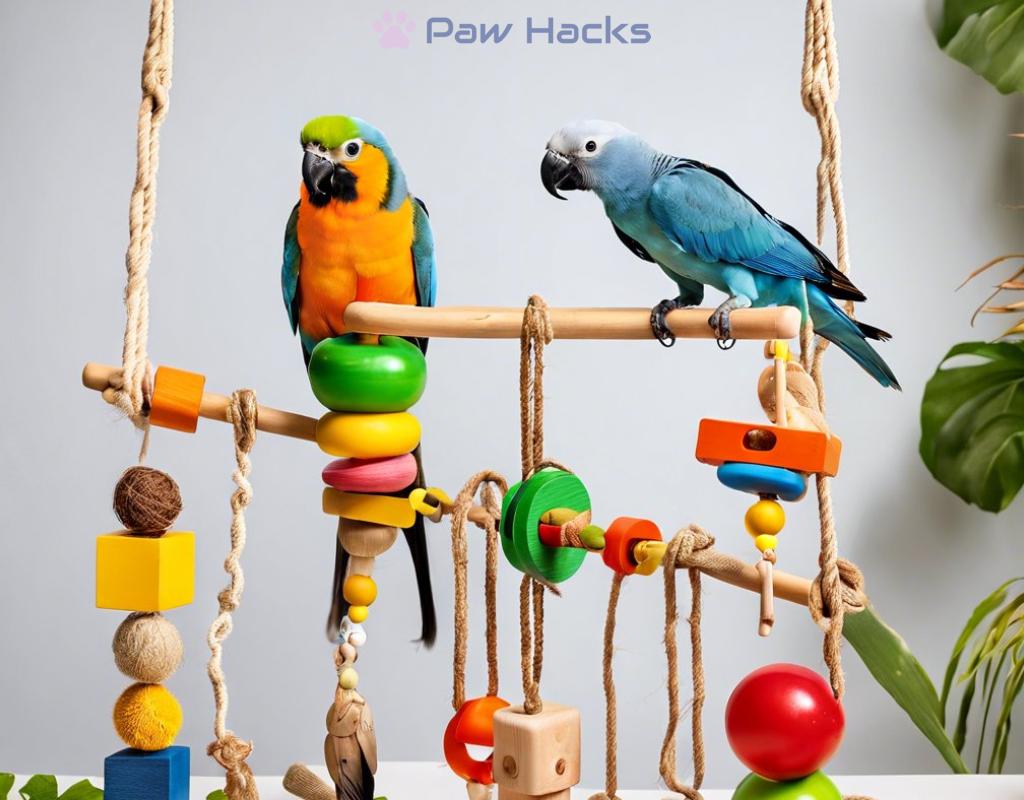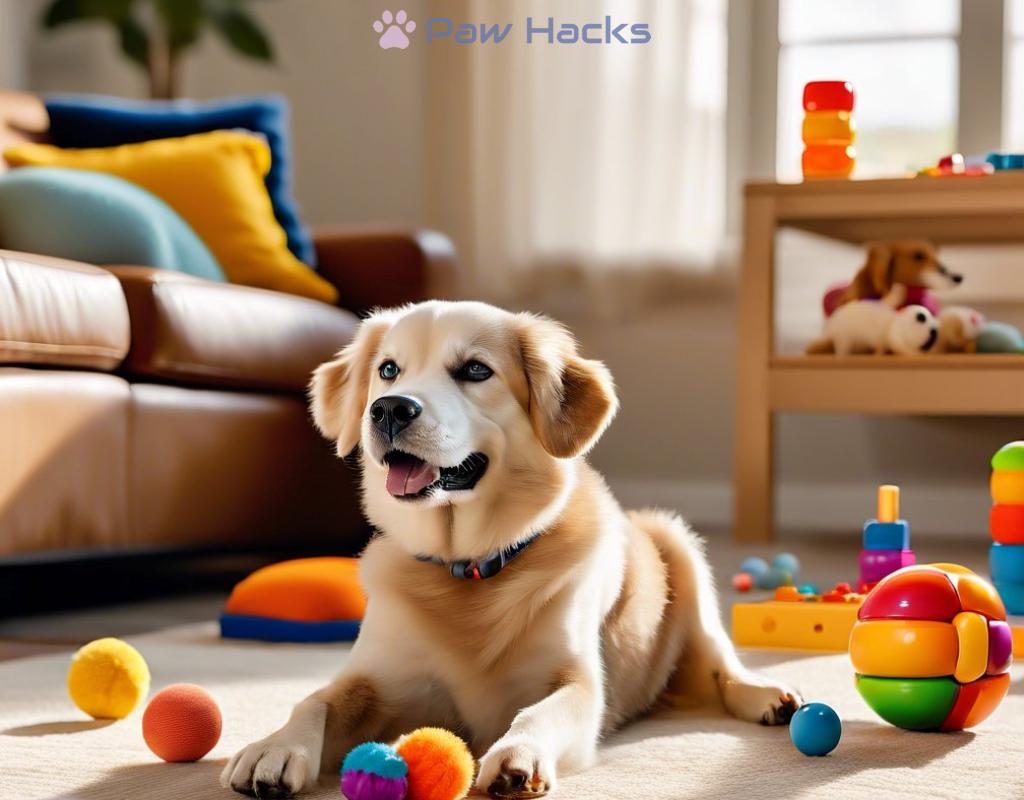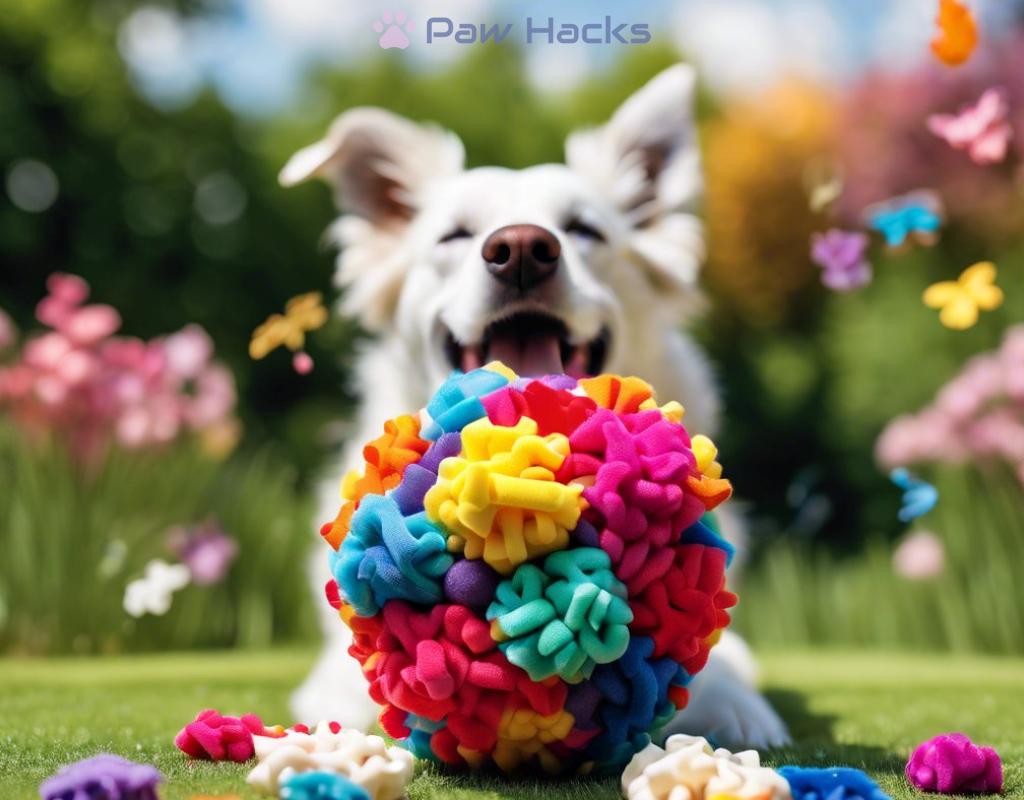Foraging Toys for Pet Birds
Unlocking Your Bird’s Curiosity: The Magic of Foraging Toys
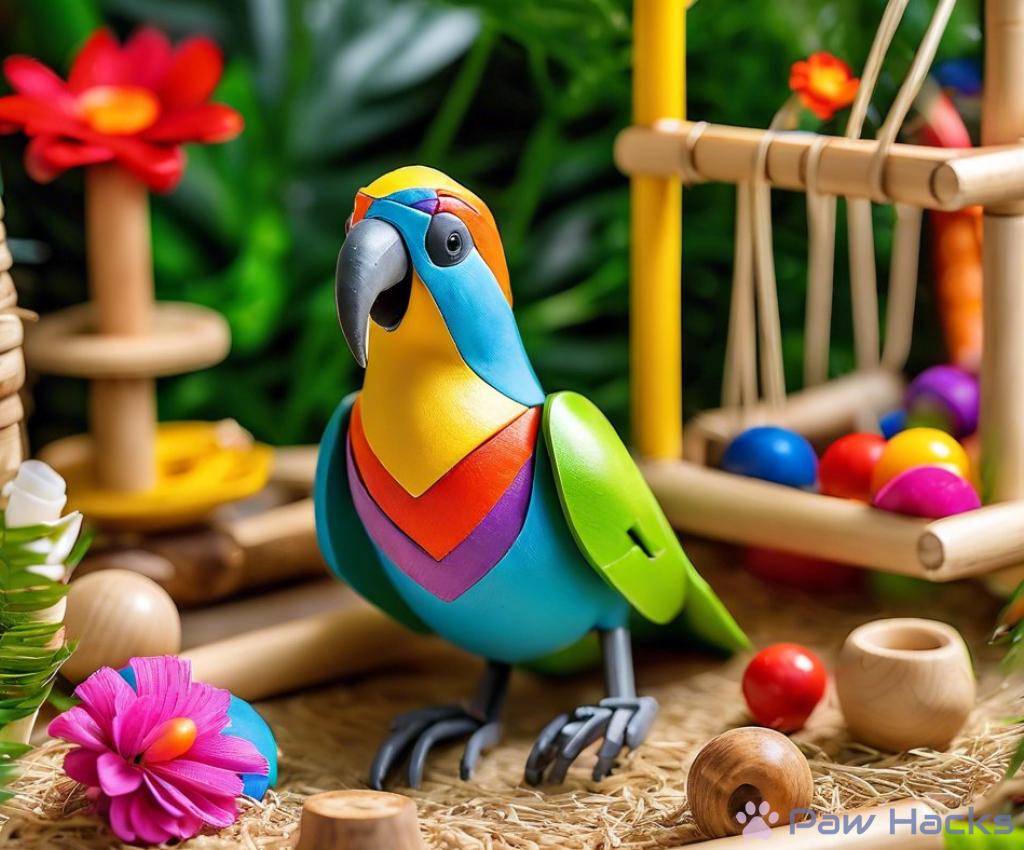
Foraging toys are not just playthings; they are essential tools for maintaining your pet bird’s mental and physical health. Birds, in their natural habitat, spend a significant amount of time searching for food, which provides them with both stimulation and exercise. When we keep them as pets, it’s our responsibility to replicate this aspect of their life to ensure they remain happy and healthy. Foraging toys help bridge that gap by encouraging natural behaviors and reducing boredom.
Foraging toys come in various styles and complexities, catering to the specific needs of different bird species. Choosing the right type will depend on your bird’s size, personality, and foraging experience. Here’s a brief overview of some popular types of foraging toys:
- Basic Foraging Toys: These are simple toys that may contain hidden treats or small compartments for food, ideal for beginners.
- Intermediate Foraging Toys: These require birds to solve puzzles or manipulate parts to access food, providing more challenge and engagement.
- Advanced Foraging Toys: Designed for experienced foragers, these toys often involve multiple steps or complex mechanisms to reach the reward.
Creating a foraging environment for your bird can be both fun and rewarding. Here are some tips to help you set up a foraging wonderland that will keep your feathered friend engaged:
- Start Slow: Introduce one or two foraging toys at a time, allowing your bird to explore and understand how they work.
- Vary the Treats: Use a mix of your bird’s favorite foods—seeds, nuts, and fruits—to keep their interest piqued.
- Rotate Toys: Regularly change the toys and their placements to prevent your bird from getting bored.
- Observe and Adapt: Pay attention to how your bird interacts with the toys and adjust the difficulty as needed to keep them challenged.
By incorporating these tips, you can unlock your bird’s curiosity and keep them mentally stimulated, which is crucial for their overall happiness.
Feathered Fun: Choosing the Right Foraging Toy for Your Pet Bird
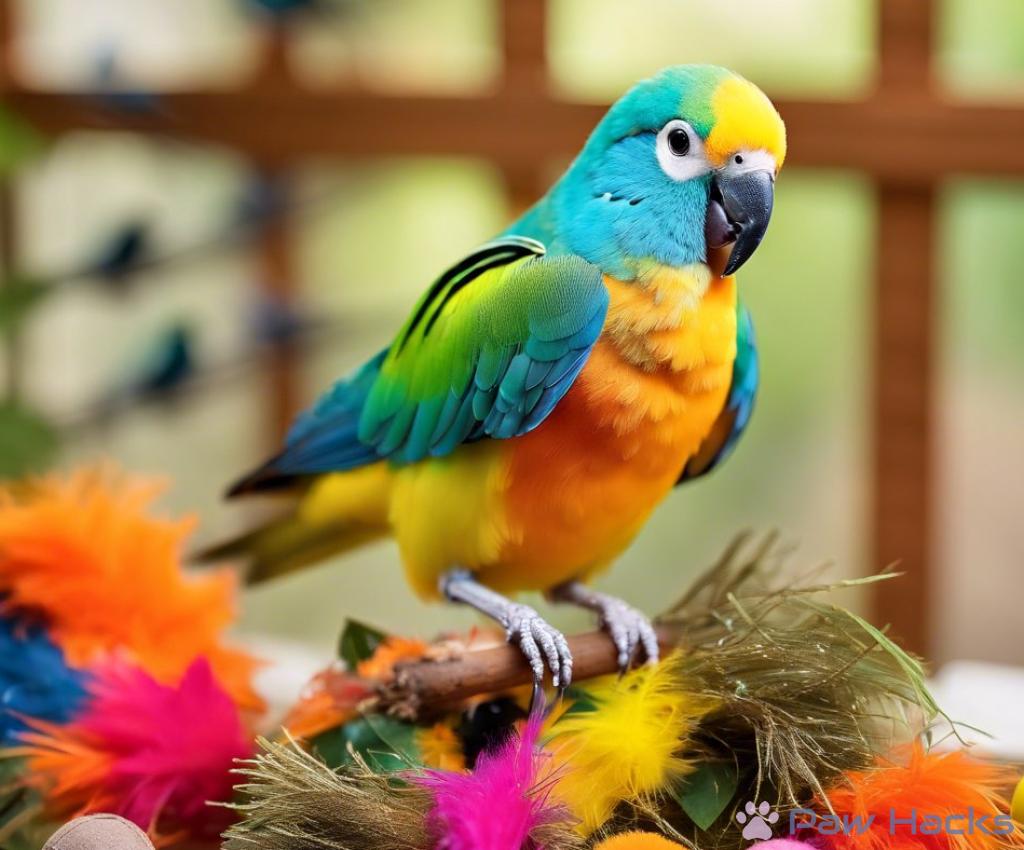
As pet owners, we want to ensure our feathered companions lead fulfilling lives, rich with entertainment and mental stimulation. With a plethora of foraging toys available, selecting the right one for your bird can feel overwhelming. However, understanding your bird’s needs and preferences can simplify the decision-making process. Let’s delve into how to choose the perfect foraging toy that will keep your avian friend happily engaged.
Every bird has its unique personality and play style. Some may prefer challenging toys that require problem-solving, while others might enjoy simpler options that cater to their natural instincts. Observing your bird’s behavior can provide invaluable insights into their preferences. To help guide your choice, consider the following:
- Activity Level: Is your bird highly active or more laid-back? Active birds might benefit from complex toys, while calmer birds may thrive with simpler options.
- Species Traits: Different species have varying foraging instincts. For example, parrots are known for their intelligence and may require more challenging toys compared to finches.
- Past Experiences: If your bird has previously shown interest in certain types of toys, it’s wise to start with those before exploring new options.
Foraging toys come in a range of designs, each offering distinct ways to engage your bird’s natural foraging instincts. Here’s a comparison of popular types:
| Type of Toy | Description | Best For |
|---|---|---|
| Basic Foraging Toys | Simple toys with hidden compartments for treats. | Beginners or less adventurous birds. |
| Intermediate Foraging Toys | Puzzle-like toys requiring birds to manipulate parts to reach food. | Birds with some foraging experience. |
| Advanced Foraging Toys | Complex mechanisms that require multiple steps to access rewards. | Experienced foragers looking for a challenge. |
Once you’ve selected the right foraging toy, the next step is ensuring your bird remains engaged. Here are some effective strategies:
- Personalize the Experience: Customize the toy by using your bird’s favorite treats, enhancing their interest.
- Interactive Play: Spend time with your bird while they explore the toy, encouraging them and providing support when needed.
- Frequent Updates: Rotate the toys regularly to keep the environment fresh and exciting, preventing your bird from losing interest.
By following these guidelines, you can create a stimulating environment that fosters your bird’s natural foraging instincts while keeping their playtime fun and engaging.
Engaging Their Minds: The Benefits of Foraging Toys for Avian Health
Foraging toys are more than just delightful distractions; they are pivotal in enhancing your bird’s cognitive abilities. Birds are naturally curious creatures, and engaging them with foraging toys stimulates their minds, helping to keep their intelligence sharp. Just as humans benefit from mental challenges, our feathered friends thrive when they are given opportunities to solve puzzles and engage in interactive play. This kind of mental engagement can lead to improved problem-solving skills, greater adaptability to new situations, and overall enrichment in their daily lives.
When birds are provided with toys that encourage exploration and manipulation, they often display more vibrant behaviors. This is crucial because a bored bird may resort to negative behaviors, such as excessive vocalization or feather plucking. By incorporating foraging toys into their routine, you create a stimulating environment that not only keeps their minds active but also encourages healthy habits.
The benefits of foraging toys extend beyond cognitive improvement; they also play a significant role in promoting physical health. In the wild, birds spend countless hours searching for food, flying, and engaging in physical activities. By integrating foraging toys into your pet bird’s environment, you can mimic these natural behaviors, providing essential exercise that is vital for their well-being.
For instance, toys that require your bird to climb, swing, and reach can enhance their muscle strength and coordination. This physical activity is not only enjoyable but also crucial in preventing obesity, which is a common issue in pet birds. By encouraging movement through foraging toys, you help your bird maintain a healthy weight while promoting cardiovascular health.
Another significant benefit of foraging toys is their ability to foster emotional well-being. Birds are social animals that thrive on interaction, both with their human companions and other birds. Foraging toys can be an excellent way to facilitate this interaction. When owners participate in playtime, guiding their birds in the exploration of toys, it strengthens the bond between them.
Moreover, engaging in this shared activity not only enriches your bird’s life but also provides emotional reassurance. Birds that experience positive interactions are generally more content, less stressed, and exhibit fewer signs of anxiety. By making foraging toys a part of your pet’s daily routine, you not only enhance their mental and physical health but also contribute to a happier, more balanced avian companion.
DIY Delight: Crafting Your Own Foraging Toys at Home
Creating your own foraging toys for your pet bird is not only a fun and engaging activity, but it also allows you to customize the toys to suit your bird’s specific needs. The beauty of DIY foraging toys lies in their versatility and the potential for endless creativity. By using everyday household items, you can craft toys that stimulate your bird’s mind and encourage natural foraging behaviors, all while ensuring safety and enjoyment.
When embarking on your DIY journey, the options for materials are abundant. Items such as cardboard tubes, paper bags, and even old wooden toys can be repurposed into exciting foraging experiences. For instance, you might take a cardboard tube, fill it with your bird’s favorite treats, and seal the ends with paper. This simple yet effective design encourages your bird to peck and explore, igniting their natural instincts to search for food. Another idea is to use a small box, like a shoebox, to create a treasure hunt by hiding treats among crumpled paper or shredded cardboard. The discovery aspect of these toys is what makes them so appealing to our feathered friends.
While crafting your foraging toys, it’s crucial to prioritize your bird’s safety. Avoid using materials that may be toxic or harmful, such as plastic or treated wood. Instead, focus on natural, bird-safe materials like untreated wood, paper, and non-toxic glue. Additionally, regularly inspect your homemade toys for wear and tear, replacing or repairing them as needed. This attention to detail not only safeguards your pet’s health but also enhances their play experience. By investing time into creating unique foraging toys, you are not just providing entertainment; you are significantly enriching your bird’s life, promoting mental and physical well-being, and nurturing the bond between you.
Beyond Entertainment: Foraging Toys as Essential Enrichment Tools
When we think of foraging toys for our pet birds, the first image that comes to mind might be one of playful antics and colorful distractions. However, these toys serve a much deeper purpose than mere entertainment. They are vital enrichment tools that promote an array of physical, cognitive, and emotional benefits for our feathered companions. Understanding the significance of foraging toys can transform the way we approach our birds’ care routines.
Birds are inherently designed to forage, and this behavior is deeply rooted in their instincts. In their natural habitats, they spend hours searching for food, which keeps them physically fit and mentally stimulated. Foraging toys replicate this essential activity, allowing pet birds to engage in instinctual behaviors that are often stifled in captivity. By providing opportunities for exploration and challenge, these toys encourage birds to use their beaks and feet in ways that promote dexterity and strength.
A stimulating environment is crucial for the overall well-being of pet birds. Foraging toys not only serve as a source of physical activity but also help to alleviate boredom and reduce stress. A well-thought-out selection of foraging toys can provide varying levels of difficulty, catering to the individual needs of each bird. The following list outlines some key benefits of incorporating foraging toys into your bird’s daily routine:
- Mental Stimulation: Foraging toys challenge your bird’s cognitive abilities, improving problem-solving skills and enhancing intelligence.
- Physical Activity: Engaging with foraging toys encourages movement, helping to maintain a healthy weight and prevent obesity.
- Behavioral Enrichment: Toys that promote foraging can reduce negative behaviors such as feather plucking and excessive vocalization.
- Strengthening Bonds: Interactive play with foraging toys fosters a stronger bond between you and your bird, enhancing their emotional well-being.
To fully appreciate the role of foraging toys, it’s essential to adopt a holistic approach to your bird’s care. This means integrating these toys into a broader routine that includes proper nutrition, social interaction, and a safe environment. By prioritizing the mental and physical health of your pet, you can create a fulfilling life that mirrors the richness of their natural habitat. With each foraging toy introduced, you are not merely providing a plaything; you are nurturing a happier, healthier, and more engaged avian companion.
Share this content:
